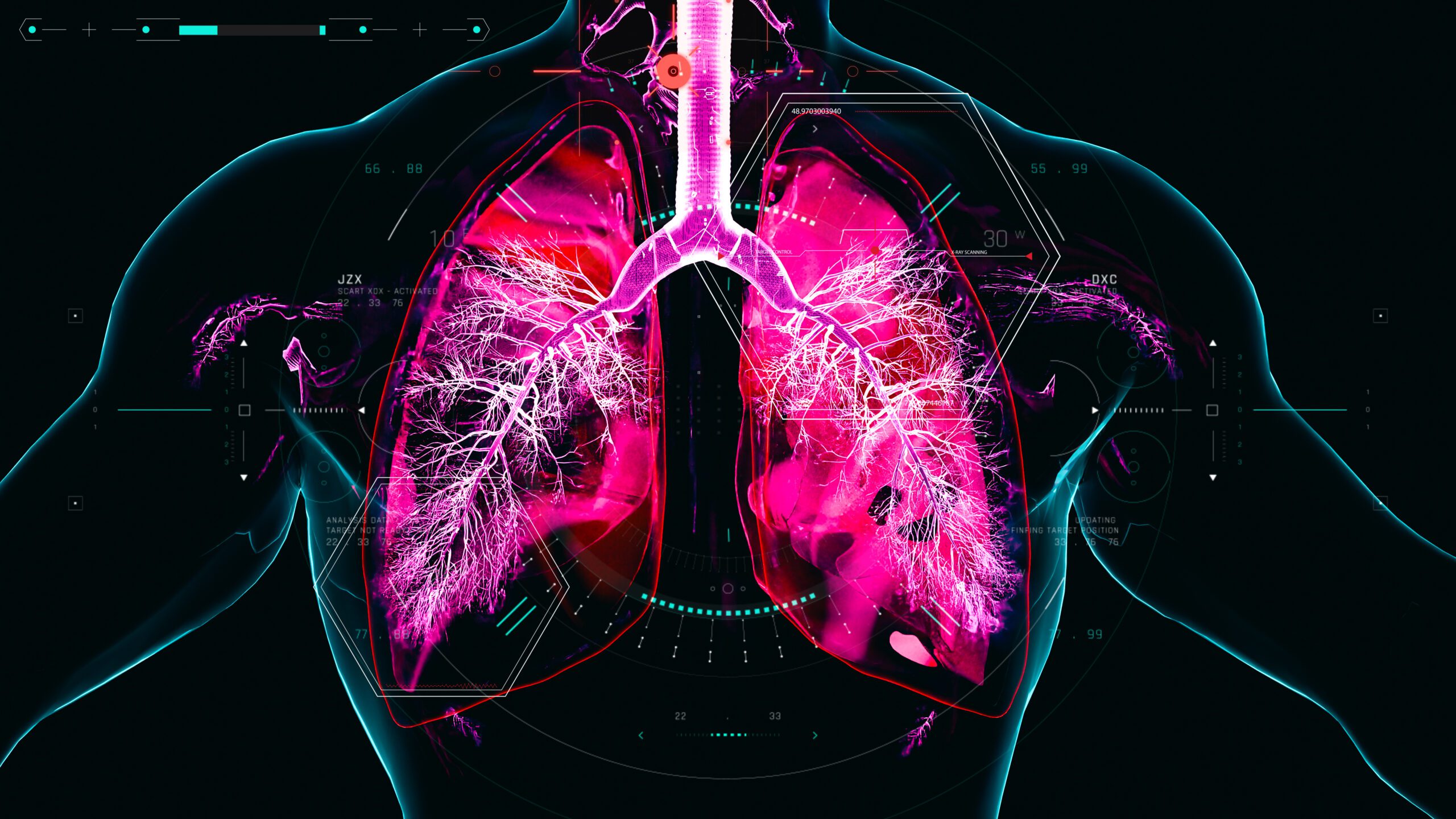At the EASD congress in Vienna, gliptins, gliflozines and further improved insulins were seen as the great hope in diabetology. But medical technology also presented itself in a good position; blood glucose monitoring without blood is no longer a utopia and the safety of insulin pumps is increasing. Below are some highlights from Vienna.
Attending congresses at major events such as the 50th Congress of the European Association for the Study of Diabetes (EASD) in Vienna with over 18,000 participants often means traveling long distances only to be faced with overcrowded venues. The most recent results from about 300 studies were presented in 63 poster groups and 1332 abstracts. They can be read on the Internet and the presentations are also available there [1].
Some thoughts on type 2 diabetes up front, expressed by experts such as congress president Prof. Andrew Boulton, MD, Manchester:
- Awareness of regular physical activity and better nutrition as important factors in type 2 diabetes cannot be supported strongly enough.
- The development of type 2 diabetes is partially arrestable.
- Both beta cell function and insulin resistance are (at least partially) reversible.
- The only way to protect beta cells in the long term is to maintain euglycemia.
- Therapy should be “acute,” i.e., early, aggressive, and early combined.
Claude Bernard Lecture
The honorable task of the 2014 Claude Bernard Lecture was taken over by Prof. Domenico Accili, MD, New York, with the topic: “The New Biology of Diabetes”. Whereas in the 1980s the main focus was still on insulin resistance driving the beta cell into dysfunction, by the 1990s Prof. Accili’s research was focusing on numerous other defects in organs other than the pancreas. In addition to multiple cellular defects of insulin-producing beta cells of the endocrine pancreas, glucagon-producing α-cells are also implicated. It is now known that the liver plays a key role through glucose and lipid metabolism disorders. Numerous inflammatory changes in the organism and further defects in the enteroendocrine system as well as in the central nervous system occur. The role of the vascular endothelium is under intense investigation, as it provides the link to cardiovascular damage. A new protein discovered by Prof. Accili that plays a central role in mediating insulin and glucagon action in the liver is the transcription factor FoxO. Glucose-6-phosphatase, as a FoxO target gene, is of importance in how insulin controls glucose production and metabolism of lipids in the liver. Based on the fact that FoxO is a mediator of insulin action in the liver, further studies showed that this occurs in the same way in the organs already mentioned. Prof. Acilli has also demonstrated that beta cells do not “die” in type 2 diabetes, but give up the highly differentiated phenotype of an insulin-producing cell, i.e. dedifferentiate to progenitor cells, which can then become α-cells. It had also already been possible to develop insulin-producing cells by FoxO ablation [2].
Gold standard metformin
For the treatment of type 2 diabetes mellitus, metformin is number two after lifestyle modification in all recommendations. If these measures are not sufficient, further individualized combinations are used today. But what is the evidence for metformin, whose mechanism of action is still unknown and which would probably no longer be approved with the available evidence? The topic came up in numerous sessions and on the last day of the congress in the Michael Berger debate. There was no doubt about the indication as a primary blood glucose-lowering drug in type 2 diabetes, advocates stated. Metformin could also no longer be considered an insulin-sensitizing drug, he said, because it likely works by suppressing glucose production in the liver. According to recent results, it also releases “glucagon-like peptide-1” (GLP-1) from the intestine. Reducing effects on cardiovascular risk and cancer risk are also unclear and results are contradictory. In contrast to numerous other references, a recent meta-analysis had shown no difference in cancer rates with or without metformin. Scientists from Oxford and Cambridge now want to change the fact that the data situation for the gold standard has been so poor up to now. They announced a multicenter, double-blind, placebo-controlled, prospective, cardiovascular outcomes study of approximately 13 000 patients on the risks and benefits of metformin.
New drugs
Much space was given to the latest data on incretin mimetics or GLP-1-based therapies. Both GLP-1 analogs and dipeptidyl peptidase-4 (DPP-4) inhibitors are used in combination with metformin. The preparations, which only have to be injected once a week, are gaining ground, and some are on the verge of approval. In type 2 diabetes, GLP-1 analogues are competing with insulins – in particular, the combination of long-acting insulin analogues with a GLP-1 receptor agonist is well effective according to initial results (fixed combinations IDegLira, LixiLan).
After each presentation from the ongoing study programs, safety regarding pancreas (inflammation, cancer) was asked. For the most part, there were no abnormalities, but they wanted to continue to monitor this problem, according to the response. Gastrointestinal side effects are common at the beginning of therapy but usually decrease later.
With DPP-4 inhibitors, it is heart failure that can worsen. The experts also considered this point to be of little danger. Studies over six years showed a sustained blood sugar-lowering effect, but little is known about long-term effects. Most experts considered the benefits of these therapies to be greater than their potential harms.
Data from the SCALE trial of daily 3 mg liraglutide for obesity treatment are favorable, but the effect fades rapidly after discontinuation, so that continuous therapy may be necessary. Liraglutide was recently approved by the FDA for obesity therapy. No approval has yet been granted in Europe and Switzerland for this indication.
SGLT-2 inhibitors
According to Prof. Apostolos Tsapas, MD, Thessaloniki, sodium-glucose cotransporter-2(SGLT-2) inhibitors (Gliflozine) are a real innovation in oral antidiabetic drugs. “These new drugs have an insulin-independent mode of action, removing excess glucose through the urine,” Prof. Tsapas said at the press conference. “Dapagliflozin, danagliflozin, and empagliflozin, together with diet and exercise, can be used either as monotherapy in patients who cannot tolerate metformin or in whom it is contraindicated, or as an adjunct to existing antidiabetic agents, including insulin, in patients with inadequate glycemic control.” According to the recent meta-analysis published by Prof. Tsapas, SGLT-2 inhibitors can lower HbA1c by about 0.7% without a risk of hypoglycemia. Additional clinical benefits include weight loss and a reduction in blood pressure. Among the main safety concerns regarding SGLT-2 inhibitors is the increased incidence of urinary and genital tract infections [3].
Insulin pipeline
In the area of insulin preparations, there was news on basal insulins. These include the long-acting analogues glargine (Lantus®), degludec (Tresiba®), glargine biosimilar (Abasria®) and probably soon the U300 of glargine (Toujeo®). PEGylated lispro insulin and the ultrarapid insulin preparations U400-BIOD-531, FIAsp, hyaluronidase insulin and inhaled insulin (Afrezza®) are coming ever closer to the desired ideal. With special galenics or the addition of hyaluronidase, absorption is more rapid. For all these new products, side effects such as hypoglycemic tendency, weight gain, cardiovascular and pulmonary safety, hepatic tolerance, and potential carcinogenicity need to be carefully evaluated. Just how time-consuming this is was seen in the case of glargine in recent years, and the safety certificate has only now been issued.
Quite convincing were the results of the combined use of the long-acting insulin analogue degludec with the GLP1 analogue liraglutide in patients in whom therapy intensification under metformin was indicated. Blood glucose control improved with less insulin, with no change in hypoglycemia rate and less weight gain.
New Devices
More and more children and adolescents, as well as adults with diabetes, are now being treated with increasingly complicated insulin pumps. A statement on the safety of insulin pumps jointly prepared by EASD/ADA in Vienna pointed out that there was an unacceptably low standard of regulatory and quality control for these devices. For technical medical devices, it is now demanded that they should be subject to stricter approval criteria.
A large study of more than 18,000 patients with type 1 diabetes by Soffia Gudbjörnsdottir, M.D., Gothenburg, Sweden, showed what insulin pumps bring to the outcome. With insulin pump therapy, patients achieved better glucose control, regardless of their age or the duration of their diabetes. The use of insulin pumps compared with multiple daily insulin injections resulted in a 29% reduction in all-cause mortality. The reduction in the risk of fatal cardiovascular disease was 43%. Type 2 diabetes patients with insulin pump therapy also have significantly higher treatment satisfaction than patients with multiple daily insulin injections, according to three poster presentations from the OpT2mise study, the largest global study comparing insulin pump therapy with multiple daily insulin injections in people with type 2 diabetes and poor glycemic control.
In the future, it should be possible for diabetics to measure their blood glucose without pricking their fingertips and with long-term profiling via the values. US diagnostics company Abbott has unveiled a new system in Vienna, the FreeStyle Libre Flash Glucose Monitoring (FGM) System. The device is worn on the back of the upper arm. A glucose measurement is taken every minute in the interstitial tissue. The probe is changed every 14 days.
Sweeteners and milk
Sugar substitutes such as aspartame or saccharin are suspected of altering the intestinal flora and thus increasing the risk of diabetes. A study published in Nature also caused controversial discussions in Vienna. That the intestinal flora plays a role in diabetes has been shown by studies in recent years: it is relevant in the development of obesity, obesity-associated inflammation and insulin resistance. Subjects in dietary studies who used sweeteners weighed more, they had higher fasting blood glucose and HbA1c levels, and their oral glucose tolerance was impaired [4].
Ulrika Ericson, MD, and colleagues, Malmö, Sweden, have gathered evidence from an observational study of nearly 27,000 people that high-fat milk and dairy products in the diet may protect against type 2 diabetes. Individuals with the highest consumption of non-fat dairy products (median: eight daily servings) were 23% less likely to have developed type 2 diabetes than those with the lowest consumption (median: one serving per day). Red meat consumption was associated with an increased risk of diabetes regardless of its fat content.
Scientists from Aarhus University Hospital, Denmark, have shown that old vegetable varieties can be better for diabetes patients than newfangled varieties. They randomized 77 type 2 diabetes subjects into three arms: one ate 500 g of tart and intense-tasting vegetables of old cultivars, the other 500 g of sweet and mild vegetables, and the third arm had a normal diet. Result: in both vegetable arms there was an improvement in important parameters compared to the normal diet arm and the “bitter” vegetables were more beneficial to health.
Source: 50th EASD Congress, September 15-19, 2014, Vienna.
Literature:
- www.easdvirtualmeeting.org
- www.easdvirtualmeeting.org/resources/18678
- Karagiannis T, Boura P, Tsapas A: Safety of dipeptidyl peptidase 4 inhibitors: a perspective review. Ther Adv Drug Saf 2014 Jun; 5(3): 138-146.
- Suez J, et al: Artificial sweeteners induce glucose intolerance by altering the gut microbiota. Nature 2014; 514: 181-186.
CARDIOVASC 2014; 13(6): 38-40












